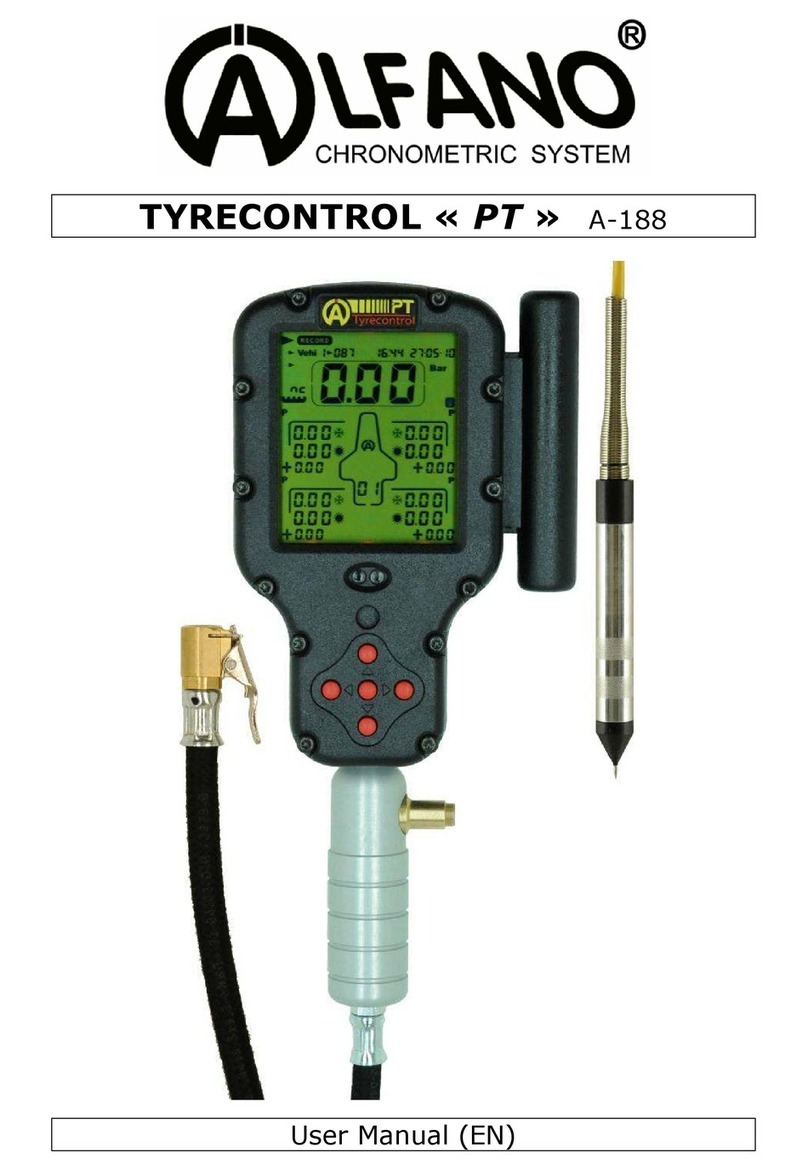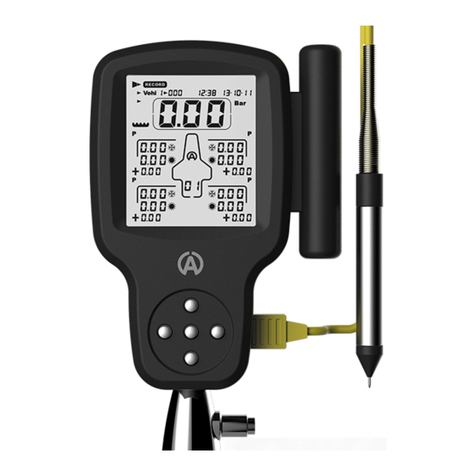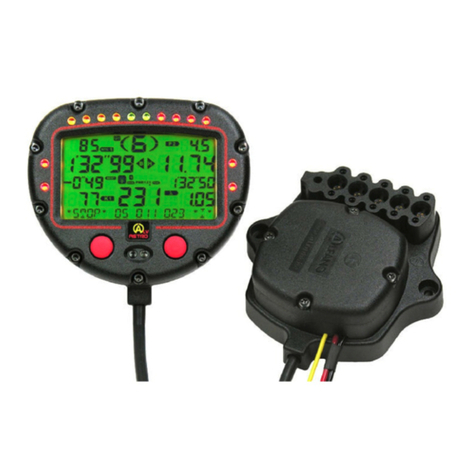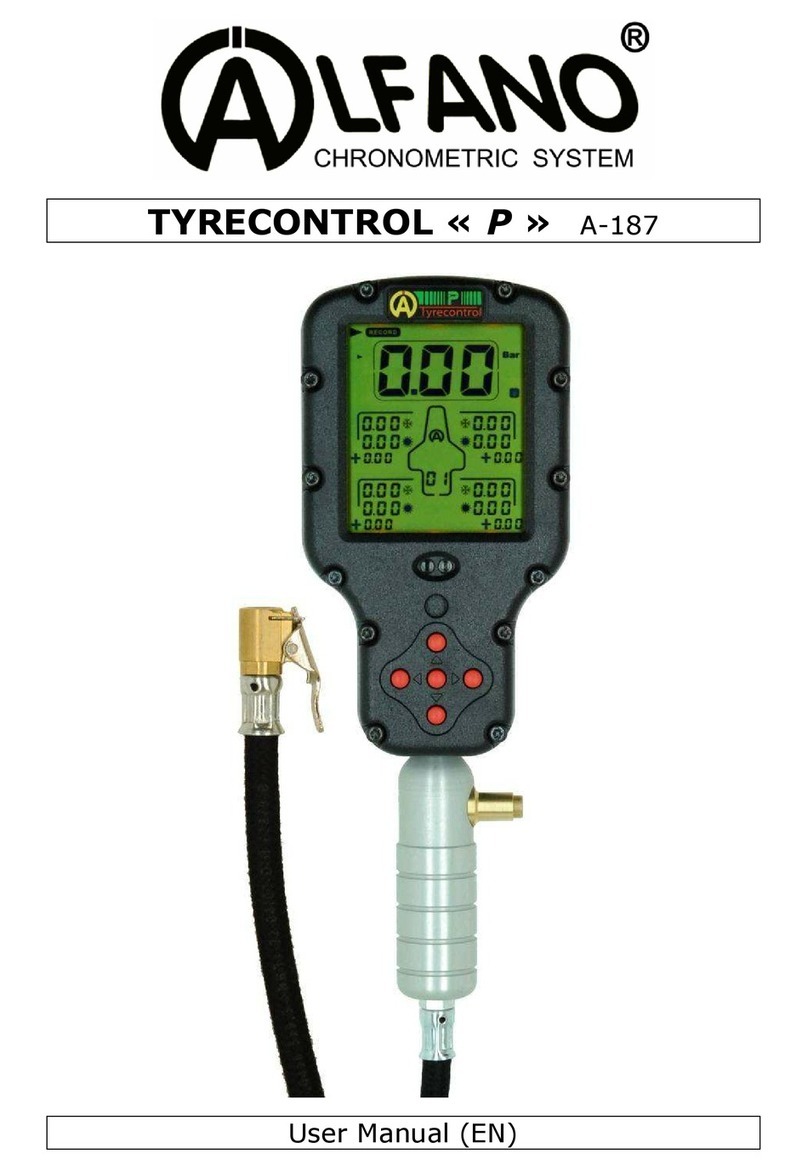
Copyright 2005 Alfano, S.A. Tous droits réservés.
1 Successively Press the right button to select
>>
>>
>>
BEST in the best lap
PREVIOUS in the second to last lap
TARGET in the programmed target time
2 To program the target time, wait 5 seconds at
the TARGET position >> So that the arrows would appear.
3 Continue to press or successively press the
right button on the UP arrows >> To increase the time.
4 Continue to press or successively press the
right button on the DOWN arrows >> To reduce the time.
5 Press the left button >> To exit.
Menu 14 RPM Strock
Configuring the coefficient to display the RPM
1 Successively press the right button to >> select /10, /8, /6, /5, /4, /3, /2.5, /2,
/1.5, /1.25 X1, X1.33, X1.6, X2, X4, X8.
NOTE During the configuration and while the engine is running, you can verify the RPM at the right
bottom of the screen.
Menu 15 RPM LEDs
Configuring the bright 10 LEDs functioning with the RPM
NOTE the AStrO LVF contains 2 configuration methods.
Method 1, configuration at 3 levels
A) Configuring the RPM (level 1) on LED 1.
B) Configuring the RPM (level 2) on LED 7.
C) Configuring the RPM (level 3) on LED 10.
Afterwards, the AStrO LVF will calculate the RPM-interpolations for the other LEDs.
1 Press the right button >> To enter the menu.
2 Press the right button on « LED 3 » >> To confirm the selection of method 1.
3 Continue to press or successively press the
right button on the UP arrows >> To increase the RPM of LED 1.
4 Continue to press or successively press the
right button on the DOWN arrows >> To reduce the RPM of LED 1.
5 Press the left button >> To regulate LED 7.

































